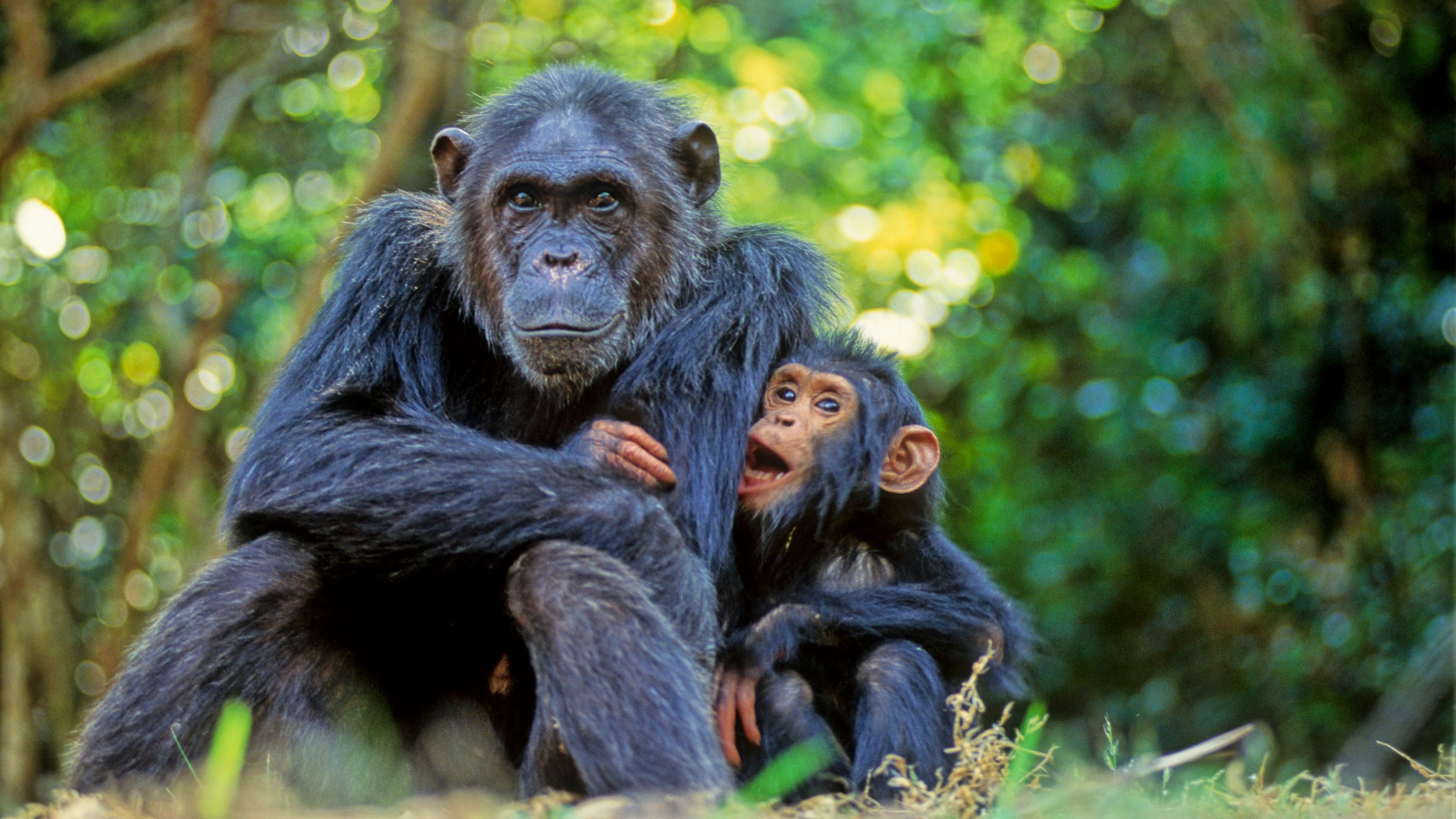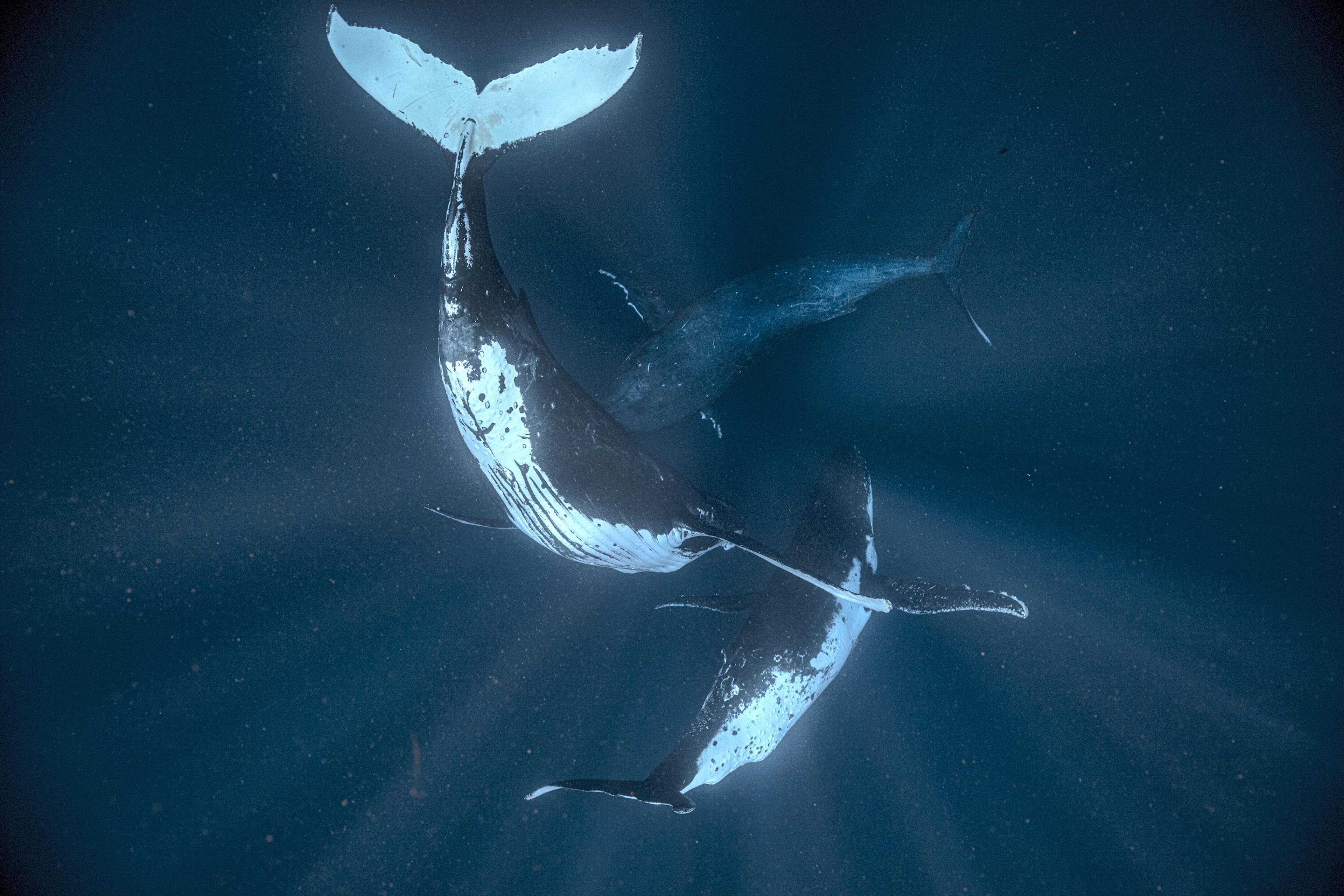Several years ago, I had a unique opportunity to observe and live with a group of chimpanzees, studying the mysterious relationship between chimpanzee mothers and their infants. As a philosopher, I never thought that my work would lead me to watch a group of chimpanzees lazily stretching their arms out of their nests as the first rays of sunlight came through the forest, that I would walk miles with them in search of food, that I would have to wait with them, miserable and wet, under a tree for the rain to stop. But there I was.
For the purpose of my fieldwork, I observed six adolescent chimpanzees (Pan troglodytes schweinfurthii) and their families for four months in the Kasekela chimpanzee community at Gombe National Park in Tanzania. Being part of this group allowed me to share their everyday life by making it my own everyday life. The experience of entwining my life into theirs changed the way I observed them. It allowed me to examine the preconceptions I brought into the field, and provided me with new insights into the social behaviour of chimpanzees.
Presuppositions play an important role in the way we observe animal behaviour. The role of these presuppositions affects how researchers choose and design their observational methodologies. The interests of researchers vary and, as a result, the background assumptions brought to any research design will vary, too. For example, if a primatologist is interested in understanding behaviour in terms of individual strategies of investment in time and energy, they will focus on observing behaviours such as male hunting and aggression that fit this background model. Those who are interested in understanding behaviour in terms of cooperation will focus instead on cooperative behaviours in females, since it better fits that model. All these contrasting presuppositions influence the way that we describe the behaviour of a species.
These presuppositions and values can play an even bigger role by influencing how we observe, how we understand our observations, and our own role in how these observations are conducted. I came to understand the radical influence of these presuppositions and values when watching how mother chimpanzees interacted with their offspring. Anyone who has seen an ape care for her infant – the gentle way that mothers cradle their newborn – can recognise the shared experience with humans. However, it’s not all so humanlike: you will also see chimpanzee mothers not share food with their infants – in fact, they might even steal food from their infants. So the observer might then conclude that the comparison with humans ends. But does it? Once we start looking at the different ways in which human caregivers and infants around the world interact, this tension between being the same and being different comes to light again. Discovering differences among childrearing practices in different human cultures helps us recognise the difficulties of universalising claims about parenting, even among humans.
As preparation before my trip to Gombe, I read the renowned paper ‘Affectional Response in the Infant Monkey’ (1959) by the American psychologists Harry Harlow and Robert Zimmermann. Despite troubling ethical implications, their work deeply influenced our understanding of the mother-infant interaction. Harlow and Zimmermann separated infant rhesus monkeys from their mothers and replaced them with inanimate versions of themselves made of wire. Some of the monster-mothers were covered in cloth, and some, without cloth, were constructed in such a way that they would provide milk. Harlow observed that the infants spent most of their time clinging on to the cloth mother, and continued to do so even when various ‘fear-inducing stimuli’ were presented to them, for example, a moving toy bear. These experiments showed that, if the mother was missing or if monster-mothers were provided, the infant would exhibit neurophysiological and behavioural characteristics that would prevent it from engaging in social interaction and cognitive tasks.
Similar outcomes have been observed in human infants, particularly in the extreme case of Romanian orphanages. In 1990, after the fall of the Ceauşescu regime, it was discovered that children in orphanages had been housed with minimal food, minimal clothing, minimal heat and minimal caregiving. Several studies of these infants found difficulties in the children’s attachment patterns, and delays in cognitive and social functioning. In short, these early studies make it clear that the caregiver and infant interaction is fundamental to the primate infant’s development.
Armed with this background knowledge, I arrived at Gombe National Park ready to start my observations. And then everything changed. Allow me to explain this change through one of my earliest and most vivid memories from my field research at Gombe: the first time I saw a mother and infant chimpanzee pair. I was expecting to observe very sensitive chimpanzee mothers who would frequently gaze at their infants, ready to respond to the infant’s needs – but this is not what I saw. Mothers rarely so much as glanced at their infants. They always seemed to be occupied elsewhere, looking at other chimpanzees, exploring, grooming – in short, paying attention to anything but their infants. This contradicted what I had read about the attentiveness of mothers. The research was not borne out by my observations. But then I looked closer. As time passed, I noticed that mothers are attentive through less obvious modes of interaction: for example, they constantly keep an arm or hand in close contact with their infants, monitoring them without having to look at them.
Once a month I travelled to Kigoma (a bustling port in northwestern Tanzania) to gather provisions. There, I started noticing that human mothers in town carried their infants on their backs, wrapped in beautiful fabrics. This reminded me of my childhood in Colombia where, in rural areas of Cauca, mothers carried their infants in a similar way. I also started thinking of how different this was from the way mothers in urban areas of Colombia and Canada (where I was living) interacted with their infants. In these urban settings, many infants spent a large portion of their time in strollers, engaging through visual and vocal modes of interaction.
This experience provided me with two fundamental insights. First, it made me think of the kind of experiences that infants undergo while in close contact with their mother. While I watched infant chimpanzees travelling with their mothers, safely nestled in a ventral position, I realised that this secure soft spot was similar to what the rhesus monkeys in Harlow and Zimmermann’s experiments were looking for when they clung to the ‘monster mothers’, despite the cost. Infant chimpanzees in this position can’t see much of what’s around them but, by holding to their mothers, they experience the world by perceiving the adult female’s reactions to events in the world. If there was an aggressive encounter that scared their mothers, infants would feel her tensed muscles and bristled hair. In a similar way, human infants can experience their caregiver’s emotional states while being held, for example by perceiving their caregiver’s relaxed muscles and movement when laughing, or their stress in a dangerous moment through a tighter grip. Through the affective interaction with their caregivers via touch, infants start to understand at an early age that there are others around them, that these others have emotions in response to the world, and that they are able to share these emotions and responses with others.
This approach to touch has neurophysiological basis. Mammals, including humans, have two types of epidermal skin, each with a different composition of nerve receptors: hairy skin and glabrous skin (ie, the ‘smooth’ skin of the palms, soles and lips). C-tactile (CT) afferents are nerve receptors in mammalian skin, found only in hairy skin, and are activated by stimulation that moves across the skin surface, like a caress. When this kind of stimulation takes place, subjects report pleasant sensations. Through the ‘social touch hypothesis’ or ‘affective touch hypothesis’, it is argued that CT afferents carry information relevant to the pleasant experience of gentle touch – such as gentle pressure or a caress from a conspecific – that’s likely to carry emotional and social significance. From the moment of birth, primates are ready to experience the kinds of emotional touch provided by their caregivers that will open the doors of social perception.
My field experience also made me question the reason why it bothered me so much that the mother chimpanzee didn’t gaze at the infant, and this led me to my second insight: most of our current research on the development of social cognition focuses on visual modes of interaction (such as infants following a parent’s gaze) to examine whether infants are capable of engaging in social cognition. Most of the ways we observe caregiver and infant interaction, such as observations of attachment or maternal sensitivity, ignore crucial non-visual modes of interaction. Middle-class, urban families in the West favour visual modes of interaction, but rural, non-Western families can favour different forms of interaction. Several authors have provided observations that support this idea. Mothers who belong to the Gusii community in Kenya don’t engage in face-to-face social communication with their infant, especially not in verbal exchanges – two cornerstone features of Western caregiver-infant social interaction. Instead, Gusii mothers comfort infants through body contact, day and night.
In Gombe, I was a philosopher caught out in the field: I would frequently fall from mountains, return to camp after 12 hours of work covered in mud and bruises. In the evenings, I removed ticks under the dim light of a gas lamp. This was not the standard work of a philosopher, and in many ways I was ill-prepared. But because I was a philosopher, my eyes were open. I sought to understand fundamental questions about the relationship between primate mother and infant, the development of the social mind, and the methods we use to observe animals. Having observed chimpanzee mothers in the wild, I think of myself now as a mother who shares with these mother chimpanzees the ability to communicate with our infants through touch but also as a mother who adopts Western practices when I, for example, play a peekaboo game. As a researcher, I now argue for investigating social capabilities in nonhuman species from a perspective that includes ways of perception that are not human-centred (or, more specifically, urban-Western human-centred). The addition of these alternative modes of social interaction will lead to the attribution of social capacities to nonhuman animals that have until now been denied to them.








